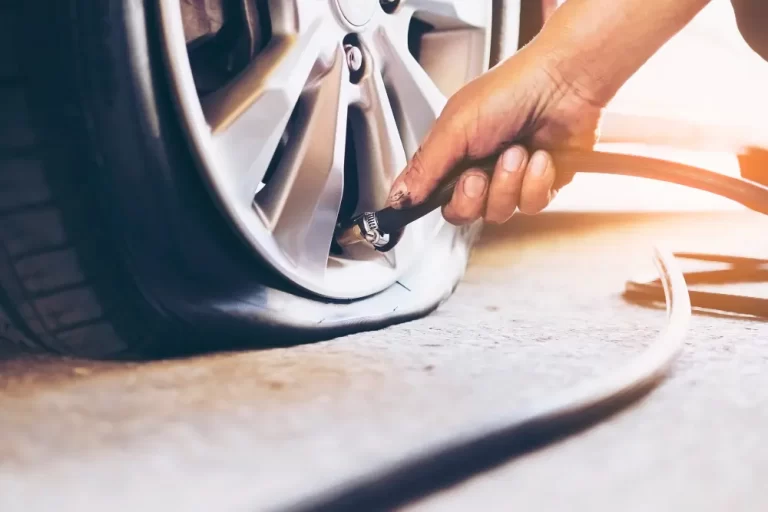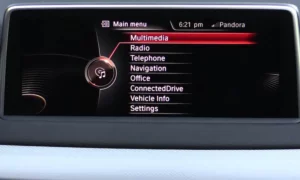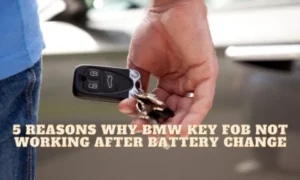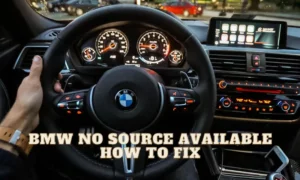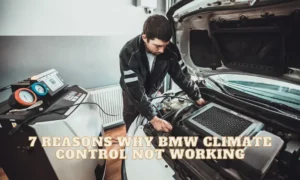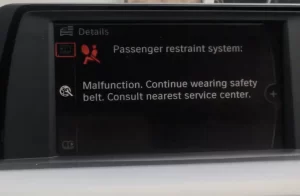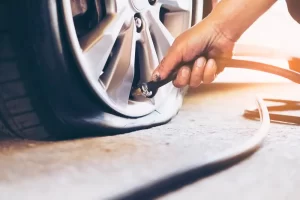The TPM may malfunction if the entire pressure in the tires is not correct. Also, bad sensor data can cause it to go off when there is no issue. If none of the solutions work, then it is a manufacturing issue, and you have to take your vehicle back to the dealer.
Why does the TPM malfunction?
When there is a TPM malfunction, your dashboard will flash the text TPM malfunction off and on in yellow lights. But what does this mean and how do you fix it? When you get a TPM malfunction message, it means that there is an issue with the tires.
The TPM malfunction light is mainly intended to warn the driver of a tire pressure issue, but there could be a few other issues related to the tires that use the TPM malfunction light.
Tire pressure is low due to regular use -Tire pressure could drop due to regular wear and tear. As we drive on the road, our tires lose that air that is inside over a long period of time.
Mechanics and vehicle designers recommend checking the air pressure in your tires once every 2 months. If your BMW has older tires, then check the tire pressure once a month.
Need to check the tire pressure at any gas station that also sells air. If you haven’t already, search for the PSI number on the tires. Use that number to fill up the tires with air.
Tire pressure is low due to a puncture or damage. – Tire pressure can drop suddenly if you accidentally run over sharp debris on the road. Rocks on the freeway can puncture the rubber of the tire.
Many streets have glass along the curbs because homeless and irresponsible people drop or smash their glass bottles onto the street and do not pick them up.
If there are holes or punctures on your BMW’s tires, then you have two options. You can take your vehicle to a mechanic who will then repair the puncture holes. Most vehicle owners repair their tires when the tires are less than a year old.
But if the tires are old and due to be changed anyway, then you can purchase new tires and have them change them up. If you haven’t changed your tires in 3 to 5 years, then there’s no need to pay anyone to repair them. It’s time to buy a new set.
There’s nothing wrong with the tires or the pressure, but there is a calibration issue. – The tire pressure has to be recalibrated for the computer every once in a while. If it has been a while since the last recalibration, then the TPM malfunction light will flash on your dashboard.
The tire pressure is fine but there is something wrong with the sensor – when there is an issue with a sensor, the sensor could send faulty data back to the vehicle’s computer.
The sensor is sending bad data to the computer – malfunctioning sensors can send bad data to the computer. So, you can reset the TPM system and reset all the data. If that does not work, then you’ll have to replace the sensor in the tire. That probably means you’ll have to replace the tire.
What is the TPM?
Gone are the days when you had to guess your vehicle’s tire pressure and check them for flatness after parking your BMW after a long day of work. Now, your BMW can alert you when there is a problem with your vehicle’s Tire pressure.
Your BMW can alert you thanks to the TPM or the tire pressure monitoring. The tire pressure monitoring is part of the TPMS or tire pressure monitoring system.
The TPM is connected to several pressure sensors located inside of the tires. These sensors will occasionally check the tire pressure in each tire and relay the information to the main computer or ECU.
If the tire pressure drops too much, the system will send an alert to the driver’s dashboard so that they know there is a problem.
The TPM is different from the other tire pressure monitoring system which is known as FTM or flat tire monitor.
How to reset the TPM
If there’s nothing wrong with the tire pressure, then maybe something is wrong with the computer system or the sensors relaying data from the tires back to the computer. Luckily, you can reset the TPM system and reset all the data as well.
Here’s how you can reset the TPM and erase all the faulty data.
First, add air into all of your vehicle’s tires until it reaches the PSI number on the tires.
Then, get into your BMW and turn it on and press the menu button, which is located next to the shift. The menu will appear on the dashboard console.
Go down to the vehicle info and click on it. Then, select vehicle status. A small menu along with a 3D image of your vehicle will appear.
Scroll up and click on the button that says perform reset. The page will change, and the tire pressure info box will appear.
Press performs reset again. The image on the screen will spin in circles, showing that the system is resetting. Do not turn off your vehicle.
Instead, drive around the block a few times. The system will reset all the data and recalibrate the new information during the drive.
When to visit the dealer
There will be some TPM issues you cannot fix with your DIY or mechanic skills. In certain cases, the BMW manufacturer did not build the TPM system with the right sensors or wires, so the system was faulty even before it drove off of the lot.
How do you know when it is time to take your vehicle to the dealer? When the mechanic has tried every viable solution to the TPM malfunction warning, the warning sign keeps turning on.
Some people on the BMW forums have expressed their frustration with the TPMS system. It continues to go off no matter how often they get their vehicle serviced.
If your mechanic has checked the sensors, the tire pressure, and reset the TPM system, then the issue could be the fault of the manufacturer.
Conclusion
If the TPM malfunctions in a BMW, then try refilling the tires with air, repairing and replacing a punctured tire, or resetting the system to erase all faulty data from the sensor. After resetting the system, drive around so the system can recalibrate.

